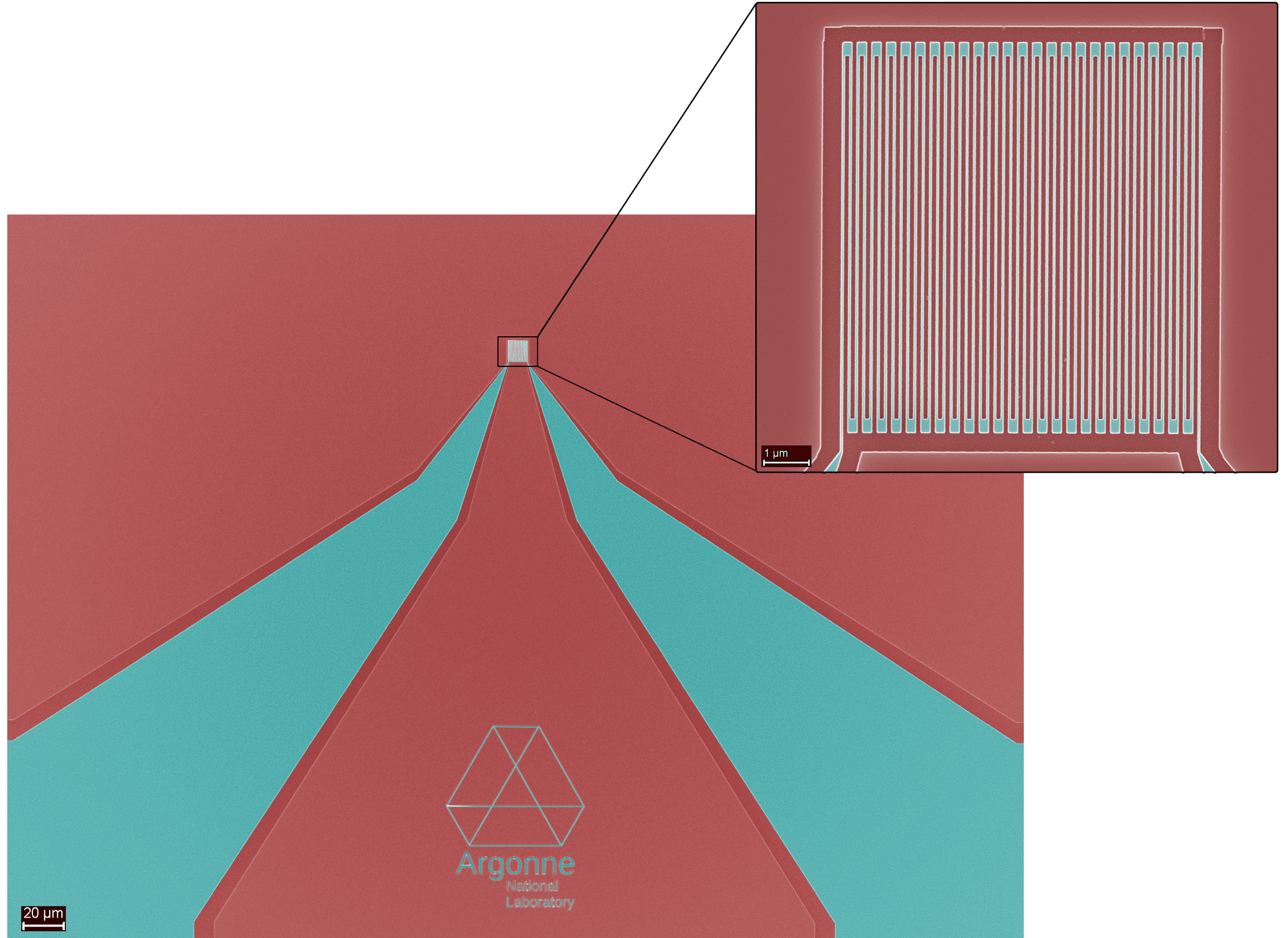Argonne with a wire width of 100 nm.
The Medium Energy Physics group and Materials Science division have partnered to develop cutting-edge superconducting nanowire detectors. Initially developed for infrared photon detection, superconducting nanowire single-photon detectors (SNSPDs) are current-biased two-terminal devices that rapidly lose and recover their superconducting state after absorbing a photon. This results in a fast pulse for efficient high-rate detection.
The Argonne collaboration was able to demonstrate efficient detection in strong magnetic fields (up to 6T). This result means superconducting nanowire detector systems can be pushed into new areas where strong magnetic fields are present, as is often the case at accelerator facilities like CEBAF at Jefferson Lab and the future EIC at BNL, where cryogenic cooling is widely available for superconducting magnets.
Towards superconducting nanowire detector systems at scale, a multi-institutional effort is underway to develop cryogenic readout electronics. The project titled “Hybrid Cryogenic Detector Architectures for Sensing and Edge Computing Enabled by New Fabrication Processes” includes collaborators from Fermilab, MIT, JPL, NIST, and SLAC and aims to develop a high-channel count, low-power cryogenic readout. The Argonne group is leading the superconducting nanowire particle detector development and testing, recently demonstrating the detection of 120 GeV protons -- a very important step for use at the Electron-Ion Collider.
